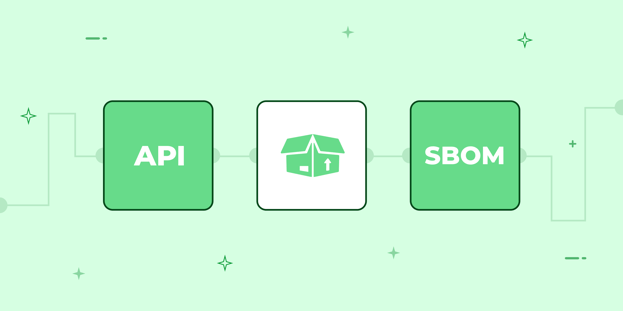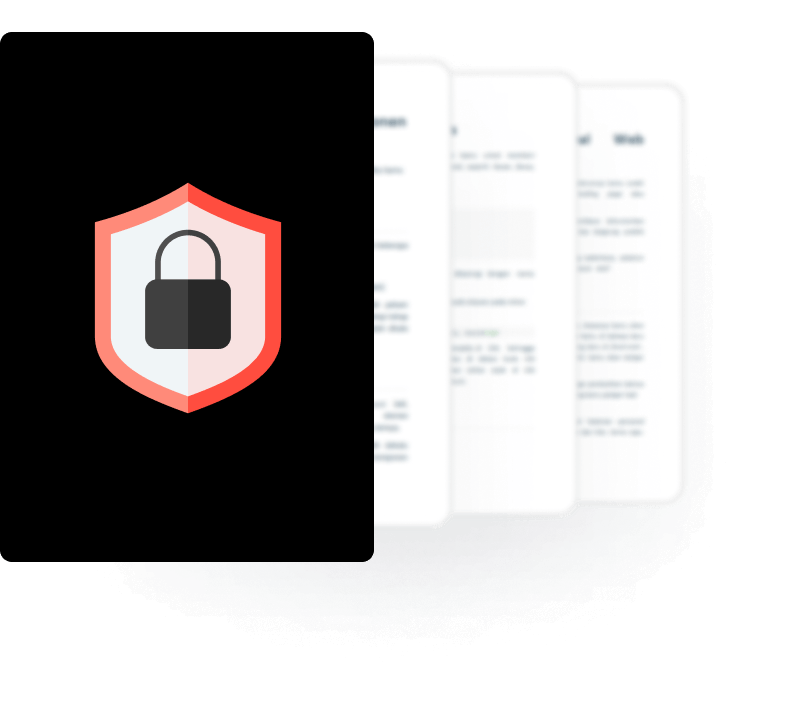
BLOG

BLOG
Creating a Software Bill of Materials (SBOM) is crucial to software supply chain security management. It helps fortify your software supply chain and reduces the likeliness of your software being exploited.
But did you know there's a way to enhance your software's security further? Well, that's when API inventory comes into the picture. Including API inventory in your SBOM can make your software solution more resilient to cyberattacks.
In this blog, we'll discuss an API inventory, why creating one is essential, and how including an API inventory in your SBOM boosts security. So, read in full.
API inventory is a complete list or collection of all the APIs used across your organization or software solution. It's a crucial part of API compliance and governance that helps identify every API used in your software and related information, such as its use, limitations, users, and security profile.
To understand why you need to create an API inventory, you must understand the importance of APIs and API security.
Almost every dynamic software solution uses APIs or Application programming interfaces for communicating or moving data between the client and the server. And as hackers are always behind data, APIs become a vulnerable point that hackers can exploit.
|
According to Gartner, 90% of web-enabled applications pose a greater risk of attack through vulnerable APIs rather than their user interfaces. |
This highlights the importance of prioritizing API security to protect against cyber threats.
And how can you ensure API security? With API inventory!
Most software companies don't have visibility into their APIs, which is why they're unable to protect their APIs, leading to data breaches.
However, creating an API inventory is among the most reliable API security best practices that software developers must follow. With an API inventory, you get an overview of all the APIs used in your software. This allows you to quickly identify any potentially risky or obsolete API and deal with the same.
Now that you know the importance of API security and API inventory, let's explore the link between the API inventory and SBOM creation.
SBOM is a list of all the components involved in developing an app or software, such as frameworks, dependencies, libraries, etc. However, typically, these components don't include APIs and related details (version, source), making your software more vulnerable to API-based attacks.
However, including API inventory in your SBOM can help. Here's how:
Including an API inventory in your SBOM means you can track all the APIs used in your software and their version details. This way, you can monitor your APIs closely, assess them, identify potential vulnerabilities, if any, and mitigate the risks.
Not having an API inventory and version control can allow older/obsolete APIs to exist in your software. And these APIs often act as entry points for hackers, leading to account takeover (ATO) and unauthorized data access.
By creating an API inventory and including it in your SBOM, you can fortify your software better and reduce the risk of unauthorized access.
Some software buyers require software developers to avoid using certain APIs. Also, APIs come with specific licensing requirements and usage restrictions. If you include API information in your SBOM, you can ensure compliance with all the requirements and avoid repercussions.
As a software developer, you must ensure the APIs used in your software are regularly updated and maintained. You should be aware of any patches or updates to be applied. After all, APIs are responsible for transferring data between the client and the server.
Fortunately, achieving the above becomes easy by including API information in the SBOM. You can easily check the version information of the API, apply any updates/patches, and eliminate any obsolete APIS.
Having an SBOM with API information allows you to understand the dependencies between the APIs and different components used in your software. This way, you can identify potential vulnerabilities that might uncover because of these dependencies.
Now that you know the importance of API inventory and including it in your SBOM, let's learn how to create one.
Firstly, you need to focus on the three pillars of API management, i.e., creation, deployment, and management. This is to help you understand the scope of API inventory.
.png?width=2324&height=1672&name=The%20Three%20Pillars%20of%20API%20Management%20(Infograhic).png)
Once done, you can find a reliable API management solution like API Sentinel. API Sentinel helps conduct a runtime inventory to offer you visibility into all the APIs used in your software. You can learn about traffic patterns, geographic destinations, and sources, and ISP allows for easy identification of threats.
You can also opt for tools that offer actionable insights for mitigating API risks. For instance, you can go for Sequence Unified API protection for viewing API attack surface and API Spartan that detects vulnerabilities using machine learning.
Ready to include your API inventory in your SBOM? Don't have an SBOM solution yet? No worries! Appknox has you covered with an easy-to-use SBOM solution. Let's dive in and discover more.
Appknox's SBOM solution is one of the most effective tools for SBOM creation. It lists all the necessary components (libraries, frameworks, dependencies) with detailed version and license information.
Using our SBOM solution, you can determine which components are being used, if new versions are available, and if any components are potentially vulnerable. This way, you can always mitigate the risk before it's exploited.
You can generate an SBOM report simply by uploading your app's binary and starting the analysis. After that, you can share the report with your software developers or engineers and integrate your API inventory, adding to the effectiveness of your report.
Want to learn more about how Appknox's SBOM solution works and how it can help enhance software security? Book a free demo now!
APIs are an indispensable part of most software solutions. They allow the exchange of crucial data between the app and the server, making them critically important. API security is the practice of making APIs secure and mitigating any attacks on them.
SBOM is a comprehensive list of components involved in the creation of software, including APIs. This list offers technical information about the components (frameworks, libraries, APIs, etc.), allowing organizations to identify and prevent any cybersecurity threats.
In a nutshell, API security is one of the goals of SBOM, which, when achieved, helps keep cybersecurity threats at bay.
API security testing helps software developers uncover potential risks or vulnerabilities associated with APIs that could be exploited. This way, developers can ensure their APIs are secure, and so is their software.
SBOM includes all the components involved in creating software, such as open-source or third-party frameworks, libraries, and dependencies, along with these components' version and license information.
Shadow APIs are third-party APIs created without the knowledge of the IT team. And this makes shadow APIs invisible and hard to include in an inventory. As a result, engineers are unable to monitor the APIs accurately, increasing the possibilities of data exposure and unpatched vulnerabilities, among other cybersecurity threats.
While the challenges may vary with organization, here are the typical challenges you might face:
Having a dedicated SBOM solution or resources can help you tackle the above challenges effectively.
An API inventory offers you visibility into all the APIs used within an organization. In case of an incident, engineers can quickly identify the APIs that might’ve been affected and take the necessary steps. This way, creating and maintaining an API inventory enhances incident response and mitigation.
Supply chain security is the management of risks in an organization’s software supply chain by identifying and mitigating exploitable vulnerabilities. To ensure supply chain security, you need to secure all the elements it involves, such as frameworks, dependencies, and of course, APIs.
But how can you ensure all your APIs are secure? Well, that’s when API inventory comes in. It offers you complete insights into the APIs used in your organization, allowing you to identify and remediate potential issues. And all this helps ensure supply chain security.
Here are some best practices for maintaining an effective API inventory:
APIs are an indispensable part of most software solutions. They allow the exchange of crucial data between the app and the server, making them critically important. API security is the practice of making APIs secure and mitigating any attacks on them.
SBOM is a comprehensive list of components involved in the creation of software, including APIs. This list offers technical information about the components (frameworks, libraries, APIs, etc.), allowing organizations to identify and prevent any cybersecurity threats.
In a nutshell, API security is one of the goals of SBOM, which, when achieved, helps keep cybersecurity threats at bay.

Hackers never rest. Neither should your security!
Stay ahead of emerging threats, vulnerabilities, and best practices in mobile app security—delivered straight to your inbox.
![]() Exclusive insights. Zero fluff. Absolute security.
Exclusive insights. Zero fluff. Absolute security.
![]() Join the Appknox Security Insider Newsletter!
Join the Appknox Security Insider Newsletter!
